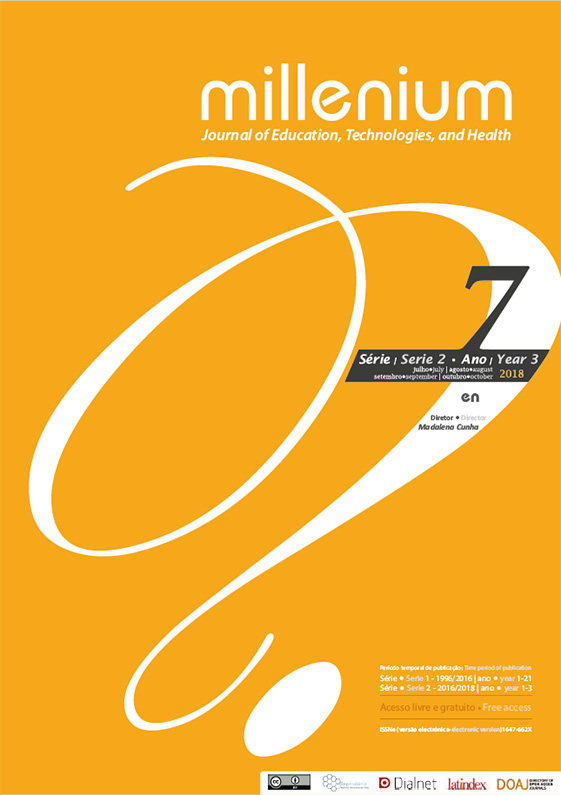Como las teorías de la educación se pueden aplicar en la enseñanza de la contabilidad
DOI:
https://doi.org/10.29352/mill0207.01.00181Palabras clave:
Enseñanza de contabilidad, Competencias en contabilidad, Teorías de aprendizaje, Estilos de aprendizaje, Educación de adultosResumen
Introducción: Poseer competencias técnicas no es suficiente para ser un bueno formador en contabilidad. El conocimiento sobre las teorías de aprendizaje, los métodos de aprendizaje, las distintas formas de evaluación del conocimiento, los distintos métodos de enseñanza, es también fundamental para ser un bueno formador en contabilidad.
Objetivos: Analizar las teorías de aprendizaje que pueden ser aplicadas en la enseñanza de la contabilidad y como ellas pueden ayudar los formadores de contabilidad a mejorar el proceso de aprendizaje.
Métodos: Revisión de la literatura sobre las competencias de los profesionales de contabilidad y análisis de la aplicación de las teorías de aprendizaje en la enseñanza de la contabilidad.
Resultados: Teniendo por base ciertas teorías de aprendizaje (behaviorismo, humanismo, cognitivismo, cognitivismo social y constructivismo), proporcionar un conjunto de recomendaciones a los formadores en contabilidad con el fin de mejorar el proceso de aprendizaje.
Conclusiones: Mismo que un formador disponga de una buena formación académica, una larga experiencia profesional; mismo que utilice tecnologías de enseñanza innovadoras, si el formador no escuchar los alumnos, si el formador no percibir que cada alumno presenta una formación de base distinta, una cultura distinta, una forma distinta de aprender; si el formador no percibir que no existe una forma standard de enseñar, el formador no será bien sucedido.
Descargas
Citas
Baker, R. E., Simon, J. R., & Bazeli, F. P. (1987). Selecting Instructional Design for Introductory Accounting Based On The Experiential Learning Model. Journal of Accounting Education, 5, 207-226.
Bates, B. (2016). Learning Theories Simplified... and how to apply them to teaching. London.
Chaiklin, S. (2003). The Zone of Proximal Development in Vygotsky's Analysis of Learning and Intruction. In A. Kozulin, B. Gindis, V. S. Ageyev, & S. M. Miller, Vygotsky's Educational Theory in Cultural Context (pp. 39-64). Cambridge: Cambridge University Press.
Chen, C. C., Jones, K. T., & Moreland, K. (2014, August). Differences in Learning Styles - Implications for Accounting Education and Practice. The CPA Journal, 46-51.
Duangploy, O., & Owings, G. W. (1994). Experiential Learning Theory: An Application with Individualized Problems on Foreign Currency Restatement. In J. O. Burns, & B. E. Needles Jr., Accounting Education for the 21st Century - The Global Challenges (pp. 238-246). Oxford: Pergamon.
Ertmer, P. A., & Newby, T. J. (1993). Behaviorism, Cognitivism, Constructivism: Comparing Critical Features From an Instructional Design Perspective. Performance Improvement Quarterly, 6(4), 50-72.
Fatt, J. P. (1995). Learning Styles in Accounting Education. Asian Review of Accounting, 3(1), 25-58.
Hassall, T., Joyce, J., Arquero Montaño, J. L., & González González, J. M. (2010). The vocational skill priorities of Malaysian and UK students. Asian Review of Accounting, 18(1), 20-29.
Helliar, C. (2013). The Global Challenge for Accounting Education. Accounting Education: an International Journal, 22(6), 510-521.
International Federation of Accountants. (2017). Handbook of International Education Pronouncements. New York: International Accounting Education Standards Board.
Kirkwood, A. (2014). Teaching and learning with technology in higher education: blended and distance education needs "joinedup thinking" rather than technological determinism. Open Learning: The Journal of Open, Distance and e-Learning, 29(3), 206-221.
Knowles, M. S. (1975). Self-directed Learning. New York: Association Press.
Lawson, R. A., Blocher, E. J., Brewer, P. C., Gary, C., Sorensen, J. E., Stout, D. E., Wouters, M. J. (2014). Focusing Accounting Curricula on Students’ Long-Run Careers: Recommendations for an Integrated Competency-Based Framework for Accounting Education. Issues in Accounting Education, 29(2), 295-317.
Lucas, U., & Milford, P. (2009). Key aspects of teaching and learning in accounting, business and management. In H. Fry, S. Ketteridge, & S. Marshall, A Handbook for Teaching and Learning in Higher Education - Enhancing Academic Practice (3rd ed., pp. 382-404). New York: Routledge - Taylor & Francis Group.
McLeod, S. (2012, June 20). Zone of Proximal Development. Retrieved December 17, 2017, from Simply Psychology: https://www.simplypsychology.org/
Merriam, S. B., & Bierema, L. L. (2014). Adult Learning - Linking Theory and Practice (1st ed.). (Jossey-Bas, Ed.) San Francisco.
Pappas, C. (2013, May 9). eLearning Industry. Retrieved December 17, 2017, from eLearning Industry:
Patel, N. V. (2003). A holistic approach to learning and teaching interaction: factors in the development of critical learners. International Journal of Educational Management, 17(3), 272-284.
Schunk, D. H. (2014). Introduction to the Study of Learning. In D. H. Schunk, Learning Theories - An Educational Perspective (pp.1-28). London: Pearson Education Limited.
Tan, L. M., & Laswad, F. (2015). Academic Performance in Introductory Accounting: Do Learning Styles Matter? Accounting Education: an international journal, 24(5), 383-402.
Weygandt, J. J., Kieso, D. E., Kimmel, P. D., & DeFranco, A. L. (2009). Hospitality Financial Accounting (2nd ed.). New Jersey: John Wiley & Sons.
Wynn-Williams, K., Whiting, R. H., & Adler, R. W. (2008). The Influence of Business Case Studies on Learning Styles: An Empirical Investigation. Accounting Education, 17(2), 113-128.
Descargas
Publicado
Cómo citar
Número
Sección
Licencia
Los autores que sometan propuestas para esta revista estarán de acuerdo con los siguientes términos:
a) Los artículos serán publicados según la licencia Licença Creative Commons (CC BY 4.0), conforme el régimen open-access, sin cualquier coste para el autor o para el lector.
b) Los autores conservan los derechos de autor y conceden a la revista el derecho de la primera publicación, se permite la divulgación libre del trabajo, desde que sea correctamente atribuida la autoría y la publicación inicial en esta revista.
c) Los autores están autorización para firmar contratos adicionales separadamente, para la distribución no exclusiva de la versión del trabajo publicada en esta revista (ej.: publicar en un repositorio institucional o como capítulo de un libro), con reconocimiento de la autoría y publicación inicial e esta revista.
d) Los autores tienen permiso y son alentados a publicar y distribuir su trabajo on-line (ej.: en repositorios instituciones o en su página personal) ya que eso podrá generar alteraciones productivas, así como aumentar el impacto y la citación del trabajo publicado.
Documentos necesarios para la sumisión
Plantilla del artículo (formato editable)





